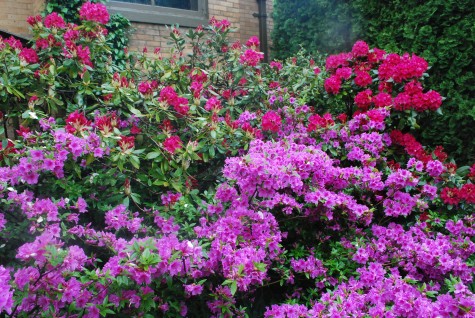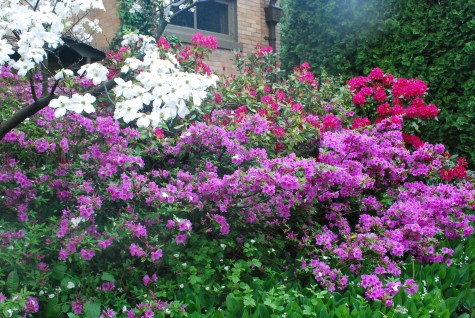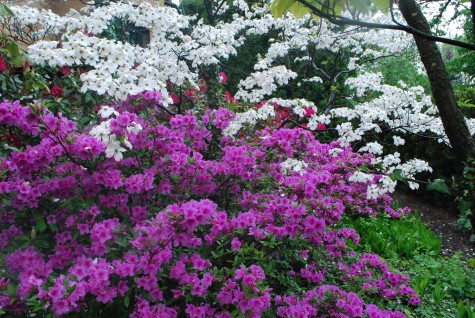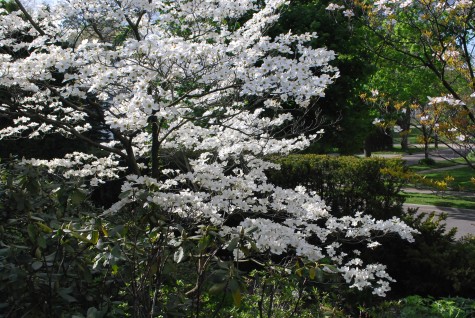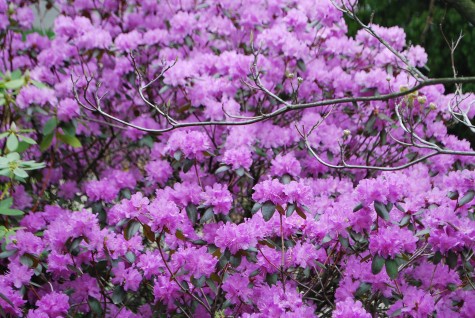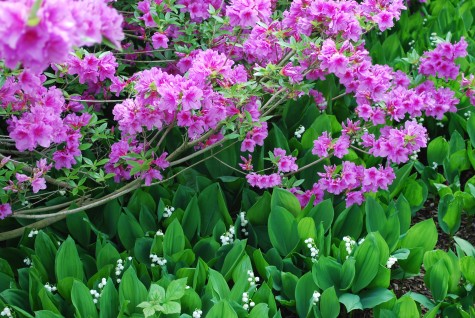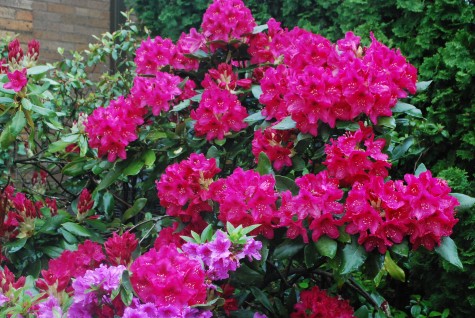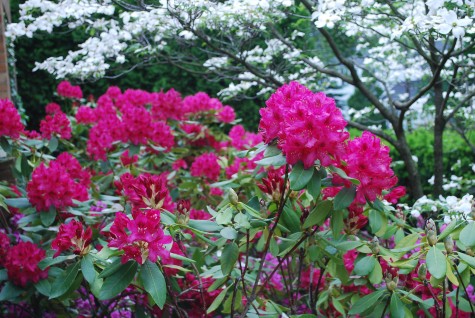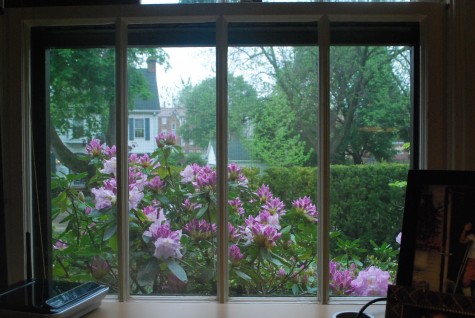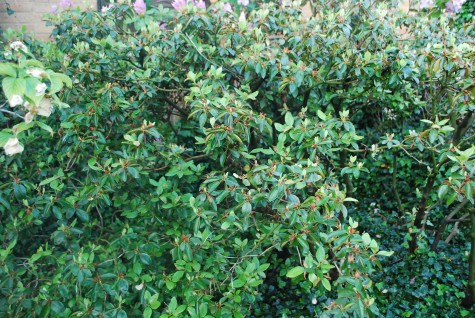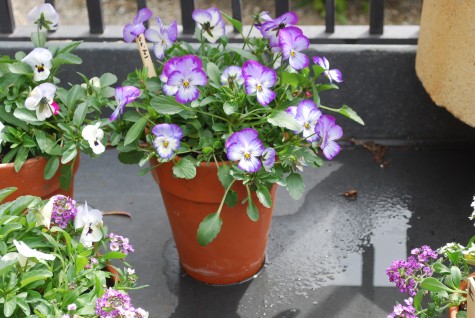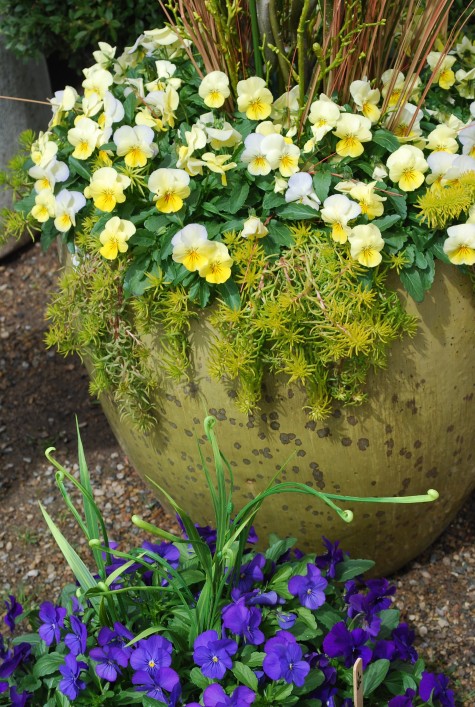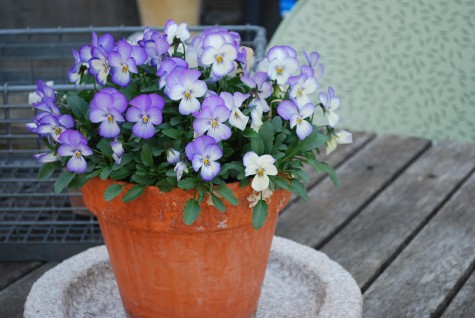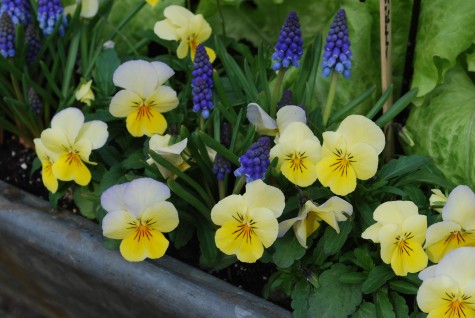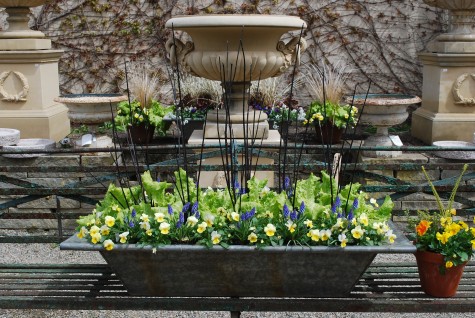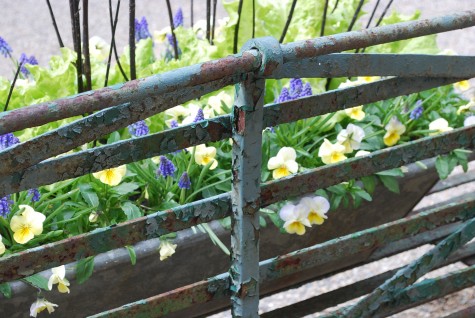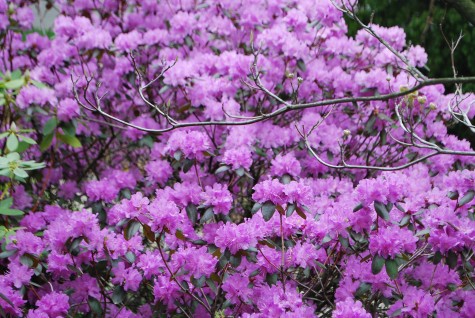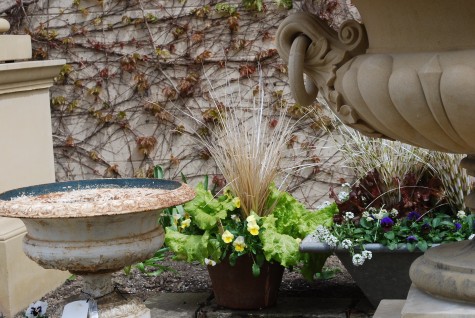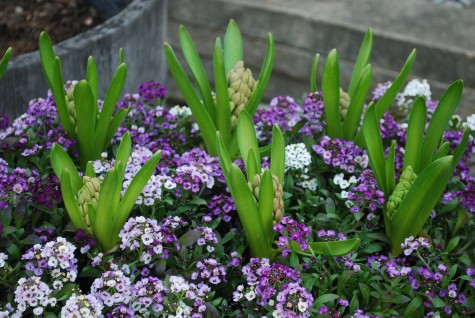I shouldn’t take it personally. They don’t like much of anyone who gardens in my zone. Why should they? If you look at a map that details where rhododendron catawbiense in native, you’ll see the Appalachian mountains from West Virginia extending as far south as Alabama. I do not garden in the mountains, nor is my climate remotely like West Virginia. One neoighborhood in my area features big stands of old oak trees. The rhododendron are passable there.
I have seen rhododendrons in private gardens in Philadelphia that grow to great heights, and great widths. The shrubs are thickly foliated; the glossy leaves healthy and robust. A big shrub in full bloom is a sight to behold. Even in a good spring, those massive flower heads with their seductively beautiful individual florets are fleeting. But if they did not flower, a broad-leaved evergreen is a plant to be coveted-especially if 6 months of winter is part of your yearly gardening program.
There are otherworldly gardens in Scotland and England that feature extravagantly happy and healthy stands of rhododendron. So what do they want that I do not have? Just about everything, as it turns out. They want an acid soil, lots of organic material, lots of sun, but protection from winter winds, regular moisture and perfect drainage. As imposing as they are is in every way equal to how particular and demanding they are about soil type and ph, and siting.
In general I subscribe to that school of thought that says if you you don’t have it to begin with, you chances of making it happen are slim to none. I do not believe I can create an Appalachian mountain weather and soil zone in my yard that would fool rhododendrons into believing they had been planted in West Virginia.
When I was young, I put huge effort into to amending soil, in the belief that it was within my power to fool the plants. Plants are actually very specific about what they need, and if they don’t get it, they will not prosper. The right soil, siting, light, mositure, drainage, weather. When you match the plant to the existing conditions, you get romance. Real romance. Now, I try very hard to match the plant to the existing conditions. Plants planted where they do not want to be sulk, decline, and die. This is not a good look for a landscape or garden.
Can I really turn my basic heavy clay Oakland County Michigan soil into an acid soil native to the open Appalachian woodlands? Not really. But that does not mean I do not lust after a beautifully grown rhododendron in my own yard. Lots of other people have the same idea. My local nurseries are stuffed with row after row of rhododendron, and azaleas, even though they mostly languish here. Rhodies are easy to dig, being shallow rooted. And those flowers are close to irresistible.
The flowers are incredibly beautiful, and the leaves so handsome-who wouldn’t be captivated by the thought that they might make one grow and prosper? I had a client once who spent a fortune every year replacing and coddling them. We bought big ones, tall ones, short ones dense from regular pruning-I was so relieved the day she gave them up. Who wants to get a failing grade in rhododendron 101, year after year?
This said, I have a number of rhodendron in my yard. I inherited a group of a Rhododendron catawbiense hybrids that are red-I do not know the name. The color is electric. They must be 20 years old by now. 2 years ago Melissa from M and M Flowers pruned them back hard-they had become very leggy, as old rhododendron do.Last year, I had very few blooms-I suspect they were pouting. This year, they are stellar. Why-I have no idea. They are planted on the north side of the house. They get almost nothing in the way of sun, which would encourage good blooming. I am quite sure the soil is basic. I use no chemicals in an effort to change the ph-this I could not stomach. I don’t feed them. They are surrounded by pink azaleas of an equal age, with a groundcover of lily of the valley. I have no idea what the soil and drainage is like here-I have never waded in to check.
I leave them be. As rhododendron are very shallow rooted, I am sure they appreciate that I am not poking around. This part of my landscape is that which came before me, and I do not disturb it. Right now, I have a show-some fading dogwoods, the red rhododendron, a stand of hot pink azaleas, and a lush carpet of lily of the valley.
I did loose one a few years ago. The group of three PJM cultivars I planted as replacements have looked like the devil since day one, and still do. Whatever. They have not grown one inch in three years. Unhappy? Oh yes.
A Rhodendron catawbiense “Boursault” is blooming outside my home office window right now. It is the so called “iron-clad” rhododendron. I moved my computer screen to the side a few days ago, so I have an unobstructed view of it. Right this minute-it is breathtaking. I would guess it is 8 feet tall, spindly and leggy-but it is blooming to beat the band.
I do have a cluster of PJM rhododendron roaring back from a hard pruning two years ago. The bloom this year-who knows what it might have been, but for a perfectly timed frost. I am mildly surprised that I have never touched this north side garden since I moved here 16 years ago. But the fact that these displaced plants do as well as they do asks for a little respect.
I leave them be-these West Virginia natives of the Appalachia stuck in a city garden in Michigan are doing the best they can. I truly appreciate their effort. I did have a bout with black vine weevils a few years back-I did treat for this. Those bugs have not been back. The highlight of this spring, with its round after round of disappointment from wretched weather, belongs to my rhodies.
